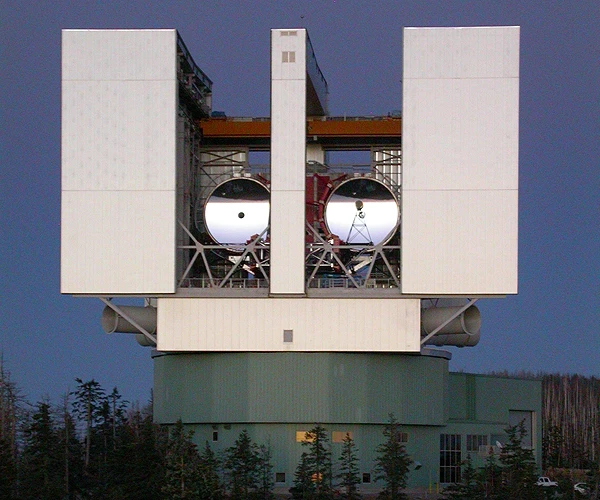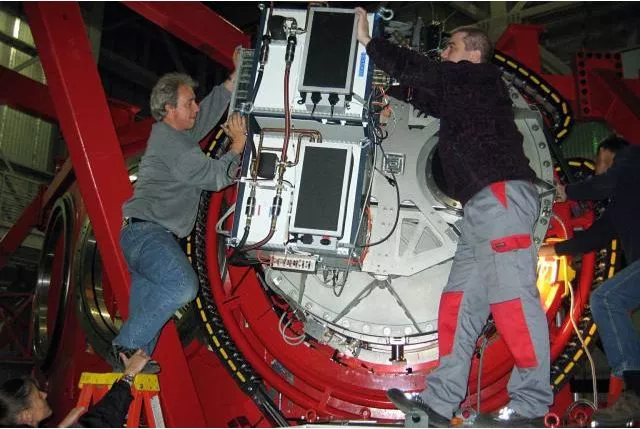The world’s largest optical telescope is about to get a lot better, thanks to LUCIFER. No, no one’s made a deal with the Devil - LUCIFER is a new near-infrared camera/spectrograph system being added to the Large Binocular Telescope (LBT) on Mt. Graham in south-eastern Arizona. The tool has been in development for over a decade, and is now ready to offer astronomers “spectacular insights into the universe, from the Milky Way up to extremely distant galaxies.” Its large field of view and high resolution will allow for unprecedented observation of star-forming regions, which were previously difficult to view due to dust clouds.
Currently operating in a half-finished state, LUCIFER will ultimately consist of two twin cameras, LUCIFER 1 and LUCIFER 2. Number 1 is already complete and in use, with 2 due in early 2011. They will be mounted at the focus point of the LBT’s two 8.4-meter (27.6 foot) telescope mirrors. In order to observe the near-infrared wavelength range (NIR), they will both be cooled to -213C (-351.4F). Even at this extremely low temperature, a robotic arm can swap in and out different laser-cut slit-masks, which allow for the simultaneous spectroscopy of about two dozen objects. At normal temperatures, users can also switch between three different cameras that use 18 different filters, depending on the required resolution.

"Together with the large light gathering power of the LBT, astronomers are now able to collect the spectral fingerprints of the faintest and most distant objects in the universe" said LBT Director Richard Green. "After completion of the LBT adaptive secondary mirror system to correct for atmospheric perturbation, LUCIFER will show its full capability by delivering images with a quality that are otherwise only obtained from space-based observatories."

LUCIFER was developed through a partnership between several research groups in Germany, the US and Italy. It is being built by a consortium of five German institutes, led by the Center for Astronomy of Heidelberg University (Landessternwarte Heidelberg, LSW) along with the Max Planck Institute for Astronomy in Heidelberg (MPIA), the Max Planck Institute for Extraterrestrial Physics in Garching (MPE), the Astronomical Institute of the Ruhr-University in Bochum (AIRUB) as well as the University of Applied Sciences in Mannheim (Hochschule Mannheim).
All images courtesy the Max Planck Society











